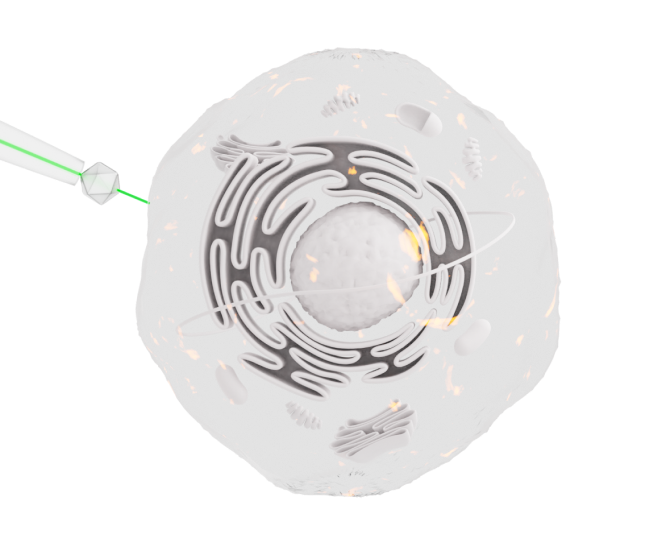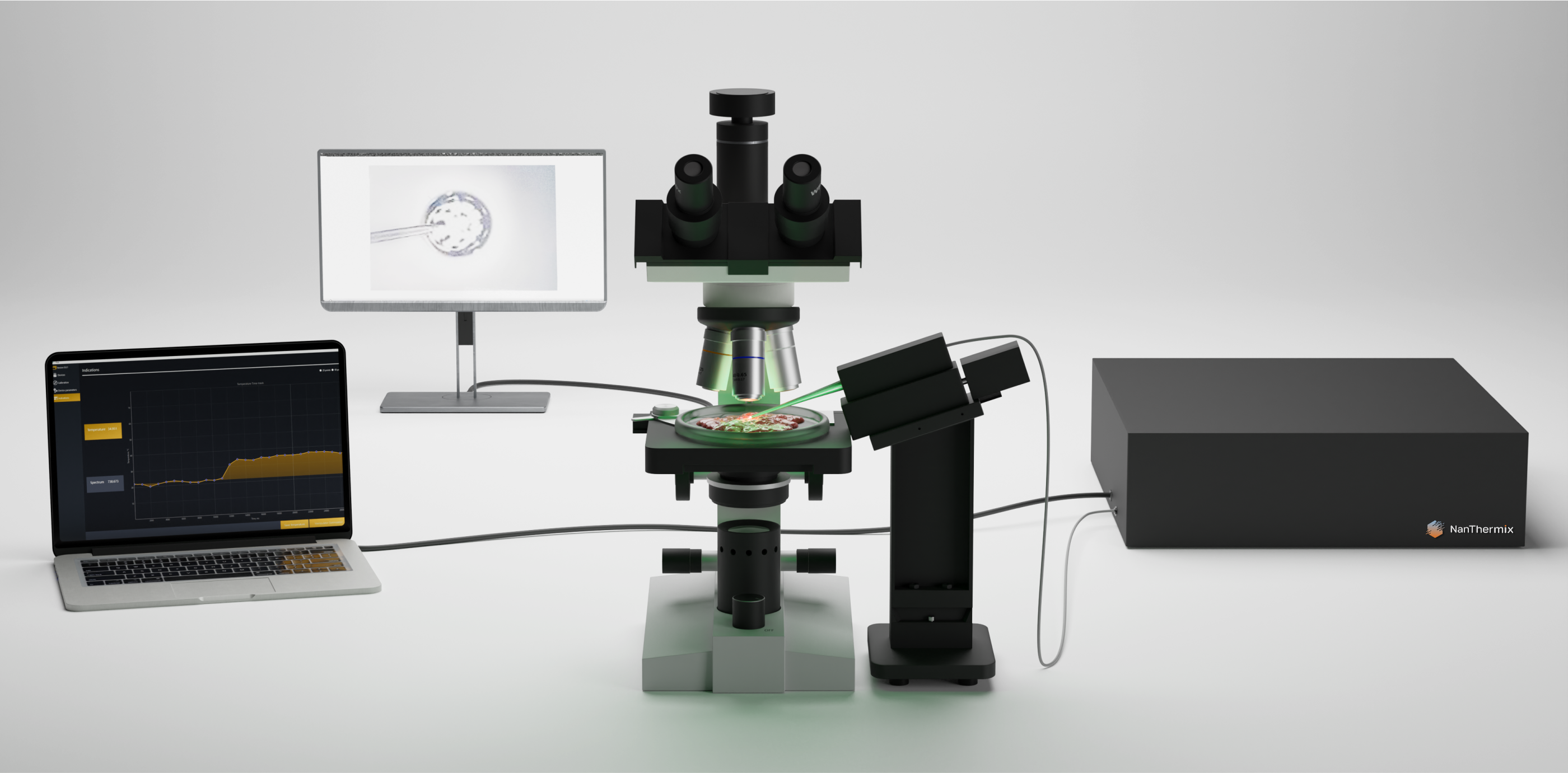
Physiological studies on thermogenesis
In a long history of the physiological studies on thermogenesis, the thermodynamic parameter - temperature has mainly been examined for different parts of the body, tissues or organs, as a whole. Meanwhile, thermogenesis is a physiological activity of internally releasing heat which is widely observed among living organisms including nonmammals and this heat can originate from exothermic biochemical reactions inside the cells as well as from electrochemical processes associated with mitochondrial and plasma membranes.
Environment surrounding the cell
It is necessary to stress that the temperature in living cells is usually treated as a nonlocal macroscopic parameter of the huge environment surrounding the cell, thereby as being constant or slowly changing. One reason for this treatment is the belief that, because of the fast thermal diffusion in aqueous media, the temperature within a cell is kept uniform even when heat production occurs locally.
Intracellular thermodynamics
Therefore, the main fundamental question of cell physiology related to intracellular thermodynamics is how big and steep a nanoscale temperature gradient could be generated nearby nanoscale intracellular compartments hosting exothermic chemical reactions like ATP hydrolysis or nearby open ionic channel inevitably producing Joule Heat dissipation originating from electrical ionic current. And if this temperature gradient is physiologically meaningful (several or up to tens of degrees Celsius) then it is a core of hypothesis of intracellular thermal signaling concept expecting that living cell can create high temperature gradients at micro-nanoscale to control ultralocally intracellular biochemical processes Including intracellular signalling.
Thermal control of a single living cell
NanThermix brings to the market a new All-Optical Diamond Heater-Thermometer (DHT) for thermal control of a single living cell and its micro/nanoscale compartments with an accuracy of 0.1 °C, submicron spatial resolution, and sub millisecond time resolution. The main advantage of thermal stimulation with DHT for a single living cell and its compartments is that the local temperature (sharp steady-state or transient temperature profiles) is controlled reliably at a pre-defined point. Moreover, the physical principles used to guarantee the absence of photobleaching in the DHT (infinite photostability), enabling the use of unlimited experimental protocols for thermal stimulation of a living cell, which is impossible when using fluorescent temperature-sensitive sensors. Combined with the biocompatibility of the DHT device, this creates a new method of stimulating a living cell - the Nanoscale Temperature Control Method, providing a great flexibility of thermal stimulation in comparison with the existing techniques.
Ultralocal temperature manipulation
The fundamental importance of the new way of ultralocal temperature manipulation constitutes in the fact that for the first time it practically introduces this parameter into cellular physiology, namely into the set of experimentally controlled ultralocal parameters of the electrochemical potential equation similarly to the transmembrane electric potential or ionic concentrations. This new tool is compatible with Patch Clamp and Ca2+ imaging and finally tames the temperature at the micro/nanoscale – the last parameter of the equation of electrochemical potential still escaping its precise ultralocal experimental control in intracellular compartments.























